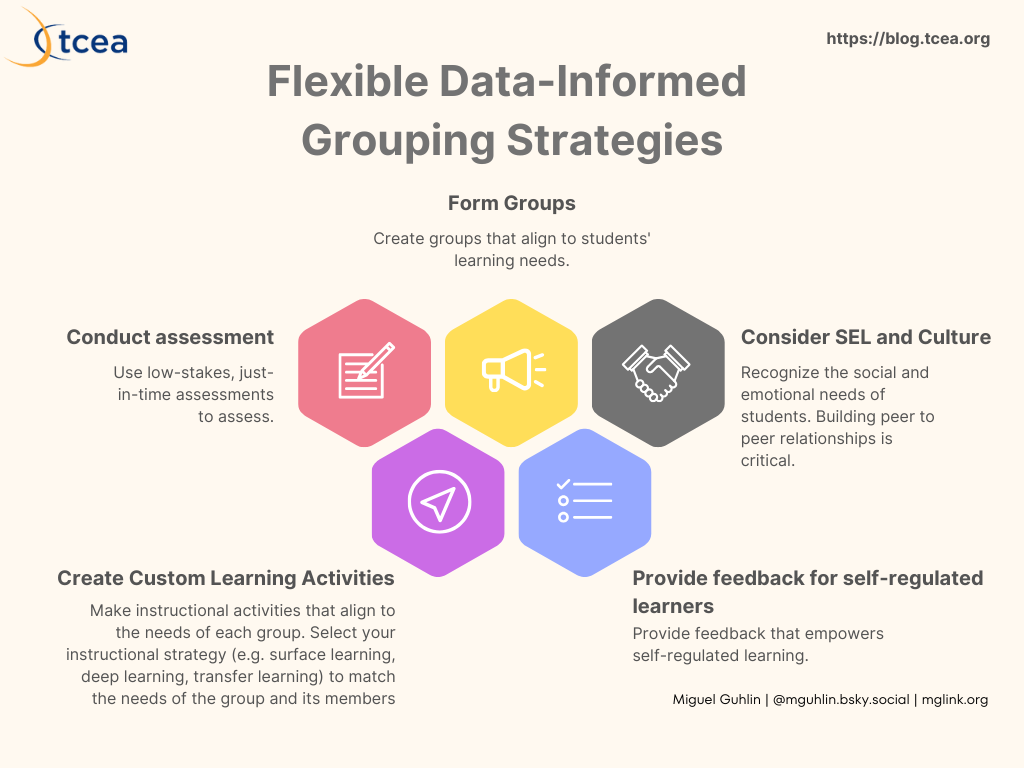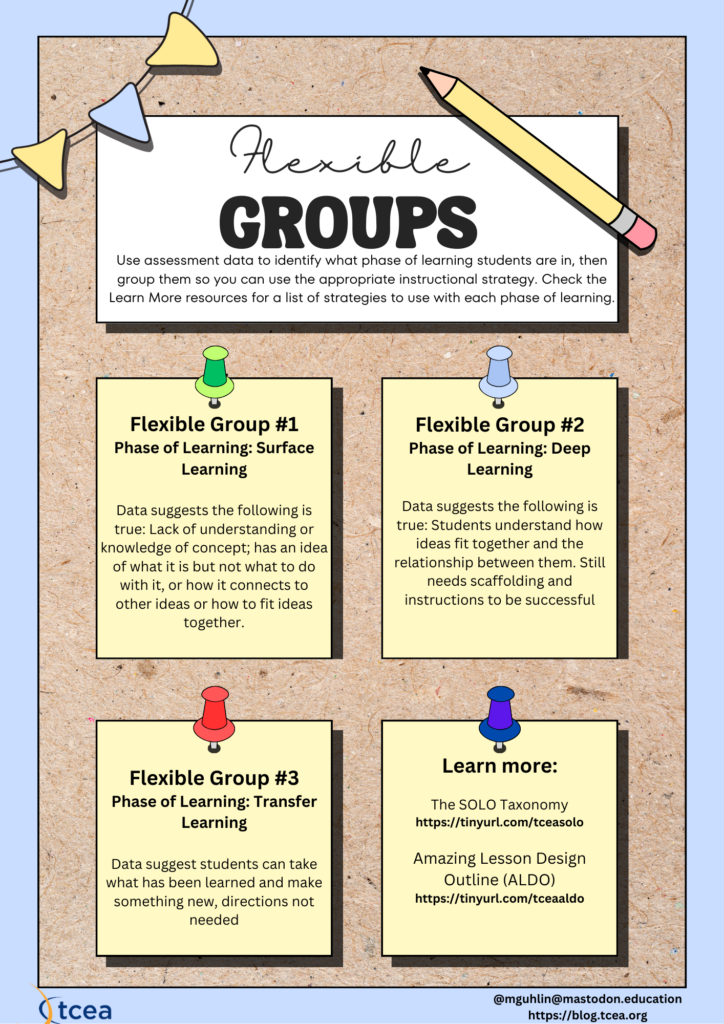Would you believe that, according to teachers, behavior is the most important factor when it comes to grouping students? There are several reasons to group students, and, recent research suggests that there are benefits to creating student groups. The teacher can tailor them to optimize learning and use grouping students to address varied:
- learning needs
- abilities
- interests
What does the research say?
Unfortunately, student grouping strategies focusing on grouping by ability have poor results. For example, ability grouping for gifted students has a low effect size (d=0.21). An alternative is flexible, data-informed grouping strategies. Let’s take a quick look at the research from Gest and Rodkin’s 2011 study. Teachers in that study reported that they grouped students for several reasons. Here are the top five reasons from most important to least important:
- Behavioral Problems
- Heterogeneous Ability Grouping
- Homogeneous Ability Grouping
- New Friendship
- Existing Friendship
If behavior was the most important reason for student groups, what was the least important reason for grouping? That would be grouping students by similar ability levels or to reinforce friendships.
Flexible, Data-Informed Student Groups
In this approach, data informs the composition of student groups. This involves assessing, grouping, and regrouping students based on ongoing assessment data. This results in grouping students not by ability or prior achievement but rather by fresh, new data about the phase of learning they are in. This can have a certain appeal, no?
In this approach, you group students to meet the following needs:
- Needs and performance. This ensures lessons are relevant and meet students where they are.
- Current understanding and skills. Your informed insight enables you to personalize learning across subjects or topics based on their knowledge.
- Include students of different abilities. With data in hand, you can more easily mix students of different abilities and backgrounds together.
- Customize activities. Since you can use data to grasp where students are in their groups, you can create more tailored engagement activities.
While you could rely on digital grouping tools for the classroom, there is another way.
Five Steps for Flexible, Data-Informed Groups
To group your students, consider following the steps below. Note that you can use a variety of digital tools to facilitate each step.
Step 1: Conduct assessment. In this step, use low-stakes, just-in-time assessments to evaluate students and identify their current level of understanding and skill. Recognize that you will be reusing your assessments to track both individual and group progress.
Step 2: Form groups. Once you have processed the latest assessment data, create student groups that align with students’ learning needs.
Step 3: Consider SEL and class culture. Recognize students’ social and emotional needs. Building peer-to-peer relationships is critical. Support classroom culture with a keen awareness of culturally responsive teaching and brain-based learning approaches.
Step 4: Create custom learning activities. Align your instructional strategy (e.g. surface learning, deep learning, transfer learning) to the needs of the group and its members.
Step 5: Provide feedback for self-regulated learners. In dynamic groups, it’s important to provide useful feedback that empowers self-regulated learning.
Using Data to Group Students by Phase of Learning

One of the challenges you may encounter with flexible grouping is not grouping students by ability. When you rely on flexible grouping that’s informed via assessment data, you are actually organizing students by the phase of learning they are in. These phases of learning include Surface Learning, Deep Learning, and Transfer Learning. To get a better grasp of where students are at in their learning using assessment data, identify their phase of learning with the SOLO Taxonomy. Here’s a quick overview of The SOLO Taxonomy:
| Stage | SOLO Taxonomy | Hattie’s Term | Learning Phase? | What It Means | HES Instructional Strategies |
|---|---|---|---|---|---|
| 1 | Pre-structural | No Idea | May or may not have Prior Knowledge | Lack of understanding or knowledge of the concept | Build and/or activate prior knowledge |
| 2 | Uni-structural | One Idea | Surface Learning | Has limited understanding, but doesn’t know how to apply it or how it connects to other ideas | Three-Step Jigsaw Method, Summarization, Vocabulary Programs |
| 3 | Multi-structural | Many Ideas | Surface Learning | Has a basic understanding, but isn’t sure how to fit ideas together | Direct Instruction, Flipped Classroom, Note-Taking |
| 4 | Relational | Relate | Deep Learning | Understands how ideas fit together and the relationship between them; still needs scaffolding and instruction to be successful | Concept Mapping, Metacognition, Self-Judgement, Reflection |
| 5 | Extended Abstract | Extend | Transfer Learning | Can take what has been learned and make something new; directions are not needed | Problem-Based Teaching, Transfer Strategies |
The SOLO Taxonomy descriptors make it easier to identify students’ grasp of ideas or concepts. What’s more, there is a rich group of highly effective strategies you can use depending on the phase of learning students are in.

The SOLO Taxonomy gives you a way to gauge the assessment data and put students in the correct group. The grouping is important because it allows you to match the most effective instructional strategy to the student’s need. For example, students in a surface learning phase may range from lacking any background knowledge to having a basic understanding. However, that basic understanding still lacks a conceptual understanding of how ideas fit together.
Here’s a quick chart you can use to guide you :
Some Parting Thoughts
Grouping students by behavior isn’t the most effective method. Instead, try using fresh data to assist you in creating groups that support learning. Ensure every student receives exactly what they need to thrive. The role you play is crucial. Remember that grouping strategies are about meeting students where they are and using informed insight (e.g. The SOLO Taxonomy) and strategies (e.g. Surface/Deep/Transfer Learning strategies) to guide them to success.


